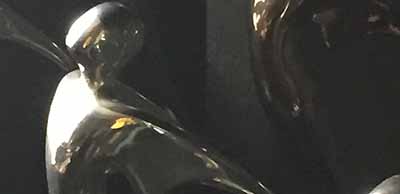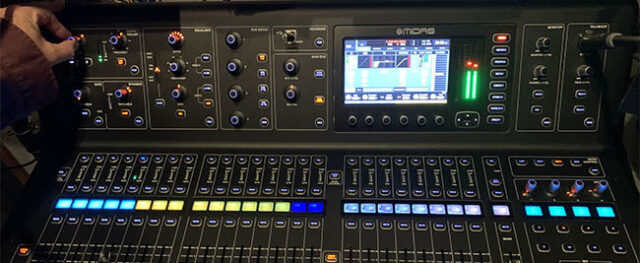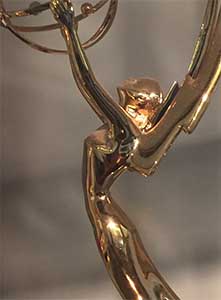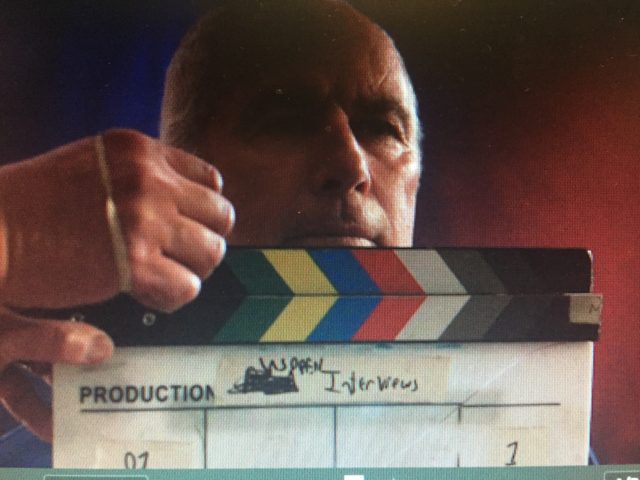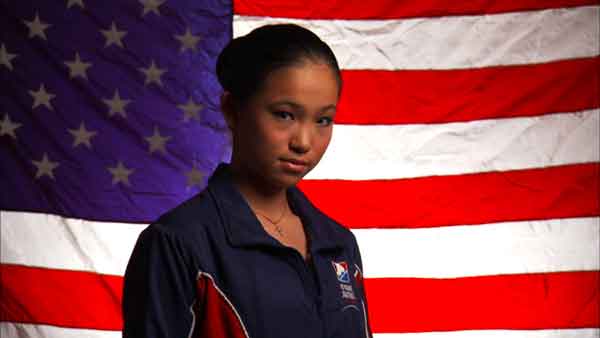Video, Film & Television Production BackgroundI have been a professional in the business since the 1990’s starting in news & television production before corporate, video and film professions. Years were applied after to my years of work experience. I am still physically active, and also a martial arts practitioner & involved in other physical activities. So don’t worry if I can keep up with your production including run & gun running multiple audio sources. Or whatever arises. I also have a formal education in journalism and applied arts focusing on video, television and film production (BA Degree). Early Years Before becoming a freelance location sound mixer I worked at Denver 8 TV in my early career. Covering the Denver CO metro area local, as a cameraman, editor, sound recordist & mixer as a staffer. Including working some other Colorado areas I learned all the skills needed to transition to freelance work years later. At Denver 8 and along my career, I learned production sound mixing sound in the field, in the studio and for video editing too. I learned a lot more location sound techniques after becoming a freelance sound recordist. Getting new tricks up my sleeve as a freelance audio guy. I also learned these skills in College and from internships. Please read below on this page’s contact information to learn about me as a sound recordist and production professional. 1 (720) 299-2084 I also learned sound mixing there for post-production including for linear editing, as well NLE – Non-Linear Editing. With the first NLE editors like AVID and the Video Cube before all the other NLE apps arrived. I have since learned the others as well aside from my large background in production. But my primary specialty is location sound recordist for decades. Aside from a sound recordist I have a solid background as a video editor and post audio engineer. I know the value of capturing good clean sound as every producer appreciates less time in the edit bay. In the past I also was a staff editor and had other production tasks. Including editing and production truck sound mixing at Denver 8 TV. I also mixed sound for live broadcasts, ENG and EFP. For decades. As these staff roles made me proficient in camera, sound mixing for editing, in the studio, as well the field. Other post-production, lighting, among other studio and field operations were also job duties. But I have focused on location sound for decades with the sound gear. Investing in upgrades to my location sound gear and evolving with the cameras to support you. Also upgrading camera support gear in lighting, grip and other popular requests. At Denver 8 TV I also learned more field lighting, as well studio lighting, and lighting everything else. All these skills are typical prerequisites to television production. I have a larger background in video, film and television production and to help you as a hiring client. After Denver 8 TV, I then moved onto Comcast, then ABC News, and Tribune, before branching out to freelance full time. These work backgrounds make me not only adept as a sound recordist, but able to assist in other aspects on your shoot. I had also covered other local areas in Colorado and all the state for national television networks. When becoming a freelance production professional & sound man working for several varied clients. Like camera crews, producers, networks among others. I started leaning these skills in college, at internships, at employers and as a freelancer. AND, if you need help with camera assistance I can too. Providing lighting or other tasks aside from location sound like data wrangling or rigging or other help. I’m there to assist. I can also bring affordable lighting, grip and other camera support gear aside from audio gear. I also picked up a lot of sound mixing & recording experience early at Denver 8 TV, Comcast Studios & Comcast Spotlight, (Then TCI). And on production trucks for ENG, Sports production trucks, among other satellite trucks. Plus my years of applied experience as a freelance sound recordist.
My location sound experience is for decades having references from a global client base. They hire me as a freelancer on location for camera crews across the globe. Both my film production & television background started in College. With my degree Major in video/television and film production (B.A. in journalism). I also have an applied arts minor with a graduating GPA of 3.98. I also had a few internships before becoming a location & studio sound professional. In both video, television and all types of film production. Learning the other skills mentioned as well attending college. In 1996 I became a freelancer and also a freelance employee for several national networks. Including ABC, CBS, NBC, and a freelance contractor for networks all over the globe. I have additional experience as an editor, and can also assist with DIT/data wrangling, audio for post or video editing, as well as lighting. Nonetheless, my location sound experience spans networks across the globe. For production companies, crews, camera people and business. Including most of Colorado. If you need someone operating multiple wireless, a boom, a mixer, IFB, slate & Comtek. Or other audio sources & devices giving you the best sound. Call on me for your local sound guy. I have client references in several other states, as well countries. Regarding my production background. I can help you with lighting, grip and other tasks as well if the audio is not too demanding, including with additional gear. Some Production ExamplesPlease note YouTube puts unrelated videos over this playlist. Hit the “X” icon to rid yourself of YouTube suggested videos over my playlist. Netflix Trailer,Destination Team USAThis is not the entire film, as you need to watch this on Netflix to watch the entire film about Olympic Hopeful’s. Who did and didn’t make Team USA. On the 2016 Summer Olympic Games in which I provided sound man services. I provided location sound recordist services in Colorado including interviews, B Roll, narration. Among other related sound mixing & recording. The camera used was an Arri Amira for this feature. I have experience with several other Arri Cameras like the Alexa series, including older Arri film cameras. Among makers from several other manufacturers. If you need an audio guy who can set up ideal reference levels and other sound mixing tasks, call me as your production sound mixer. As a production professional I have also been a location sound recordist for Netflix among other film producers. I have experience on feature film sets as a boom operator and sound mixer (chief engineer). Aside from modern cameras; including expertise in 35mm 3p among older camera formats. Also, as a sound man & production sound mixer professional on other film channels. Move back to the top of the page Jimmy Kimmel LiveDocumentary in Boulder CO& surrounding areasThis documentary series was filmed with RED Epic Dragon cameras where I provided sound guy services across the Boulder Colorado areas. Including Boulder, Louisville, Longmont & Lafeyette CO with gear. I’m highly familiar with RED camera sync as well mixing & recording audio techniques. Aside from RED, I have experienced in production with all the major brands. I have all the cables for time code, as well audio input for RED cameras among others. I know the menus to set the camera quickly. In addition, I am also expert with several other cameras reference levels, as well setup including:
Review more of my work in this link here Larger Client BaseI can be local and based in the southwest Denver metro CO area. I can reach northern Colorado Springs areas within an hour among other areas including the eastern Rocky Mountains. I can get to other metro areas or other popular production areas including:
I will go where your production is in Colorado. I can be in other Rocky Mountain areas quickly as well like Black Hawk, Central City, Vail, Avon, Beaver Creek, Breckenridge, Dillon, or other popular production areas. Anywhere in the state. I provide service to every Colorado area, having been relied on by several top-level film production companies across the globe including:
Major films I have worked include:
I additional chops include being a sound man hired by top 500 advertising agencies, several production companies, several USA networks. And several foreign television networks as well producers among others. They have a sound person that can provide the best possible audio recordings. Mixing and recording to a specific video camera or to referenced files. Film 35mm sync, sync to DSLR. Or other cameras or other delivery. Includes Time Code & Audio Synced files. As a sound man I have worked with thousands of cameras over my professional years. Including Sony, Canon, Panasonic, Ikegami, Thomson, Arri (film and video), Black Magic, RED, among others. I have also traveled across many continents as a location sound mixer. And have the pleasure of assisting a diverse group of clients as their audio guy. My numerous repeat clients that rely on me as their first call for a sound operator. Or to refer someone of equal experience. When I am not available as well. I can also refer other sound people in Colorado for audio tech assignments. Varied production types in film, television, satellite up-link. Or other specialty. These include for feature films, complex interviews. A particular television program, documentaries or reality TV. For sports broadcast or a profile or story. For corporate video production, or television commercials. For specific message video production. Infomercials, ENG/news among many other capabilities. As well having the experience. My additional expertise and resources. Includes referral to other production people. Or resources in Colorado. Among some other national as well, global resources. I can be a valuable aid to your production. JWT, America’s MarinesMy production experience started in the local Colorado news market. But afterwards onto the national television market then quickly expanded to other experience in my employment history. My experience gathered; I then made a BIG jump to more diversity as a sound man when I became a freelance production professional. Enabling me more experience developing as a freelance production sound mixer. My additional skills can also assist any camera person or crew on production. Allowing a shorter day with the extra set of hands. Well qualified to assist in several areas as well. Additionally, I have additional lighting, grip, and camera support equipment. I can provide for crews or camera people at reasonable rates traveling into Colorado. Those needing to cut hassles of airline travel, extra cases or luggage being transported. Reducing the other burdens of transport nationally or from another country. Move back to the top of the page  Location production sound images & camera crews in Colorado including ENG, television production and TV commercial advertising in various locations by Nick of Mister Photon Media Troubleshooter,Planner & Sound PoetMy experience as a sound/audio engineer spans all types of locations, for films, in studio operations, for production trucks. Helping camera crews and engineering for large national broadcasts as a sound operator. Enabling me the self reliance that produces quality mixed audio recordings on any shoot to any client. And with my prior experience I can troubleshoot many common audio challenges. This expertise not only complements my location sound for corporate video, EFP, or ENG. Or film or television crews or for other types of crews. Enabling me to troubleshoot production challenges quickly. Or have none on the first place. Our advantage working together is a planned production when you call me for Your soundy/ie/ee prior to your shoot. Tell me the who, what, when, where, why, how, because and who for. On game day, (your shoot), I’m all yours with undivided attention. My concern to the clearest, brightest sound recording free from distraction. To the format or recording device or specific media or camera you need. A few video and television production samples by Nick Teti of Mister Photon Media in Colorado
Planning QuestionsAsk these or inform your sound recordist about these before your shoot.
Other important planning questions
The Load-Out
Camera Connections
For less experienced sound recordists, whom are breaking in or have not worked with as many cameras, I recommend you calling the manufacturer of the audio gear and the camera. Asking them the reference level in DBU or DBFS scale. Watching YouTube videos on the camera, or even google searching the camera. You can almost always find the camera user / operation manual online. I’d avoid online discussions as bad advice can sometimes can be given, unless via manufacturer. Often or almost always there is a recommended reference level to the camera you will be working with. Often your camera person may know what is the best level setting to avoid over or under-modulation. You can also talk to the camera owner on their preference for audio reference level. Too little audio introduces white noise and too loud clips the audio. My experience dates decades, so be rest assured, I have most likely worked with your camera(s). I recommend calling the manufacturer first. Non-Profit educational video below These are a few questions & answers with information to talk about to avoid unwanted surprises or problems. Move back to the top of the page Why Hire a Local Location Sound Mixer?Hiring a Denver native like myself, with more than adequate insurance coverage, (not that you’ll need it). With exceptional work experience dating professionally to 1990, and a deep inventory of location sound mixing & recording equipment with give you the best audio possible. When you travel into Colorado. You will not lose expenses on travel time, air fair, baggage or cargo fees, or your reputation with your clients. When you hire a highly seasoned professional like myself for your production. When spending the time, and expense you can rely hiring me will not result in additional time or budget on your production. If there is unusual or distraction on location I will do the right thing as your sound guy to alert you. So solutions in location can be immediately solved, so you do not have any problems later in your edit. I understand that the best sound mixed and recorded is always my motto. And I will not put your shoot and budget, and time in jeopardy by recording shabby audio. SOUND IS EQUALLY IMPORTANT TO PICTURE. Please remember this when I quote my day rate based on the gear needs and schedule. Just hire someone like me who has been at this professionally. Just remember hiring the best sound guy whom takes their job to do the best is well worth the money. So you don’t need to shoot it again. Problems that can be solved,in location sound mixing / recordingThere are several problems that can arise from locations and hiring a skilled sound man like myself can stop these problems and preventing the negation of time, money and travel. They include:
Among other common perils on location I have ALREADY conquered on a common basis so you do not have to worry that it will happen on your shoot with my advice and location sound help. And if they do for some unforeseen reason, I will solve any problem quickly. To the new sound recordist, it’s most commonly an overlooked switch, menu setting, RF, AC, incorrect power supply, or other minor pest or situation easily squashed, that I already have prior experience with as a veteran sound operator. I tackle them all and with my experience & they are not a problem in the first place or very short lived. Over the years I’ve adapted and managed several problems of all types of location sound challenges. From leaf blowers, lawn mowers, white noise systems, heavy RF areas, inter-modulation, roaring AC, and other noisy backgrounds. I have the professionalism to ease rough waters as well if they occur. Taking an experienced sound recordist’s suggestions are a good idea as well to capture the best sound. On your production so you do not have problems later in post-production editing. Production Experience Summary & Short Client ListSome Producers / Production Companies
Some Corporate Clients & General Productions
Reality TV Shows
Documentaries
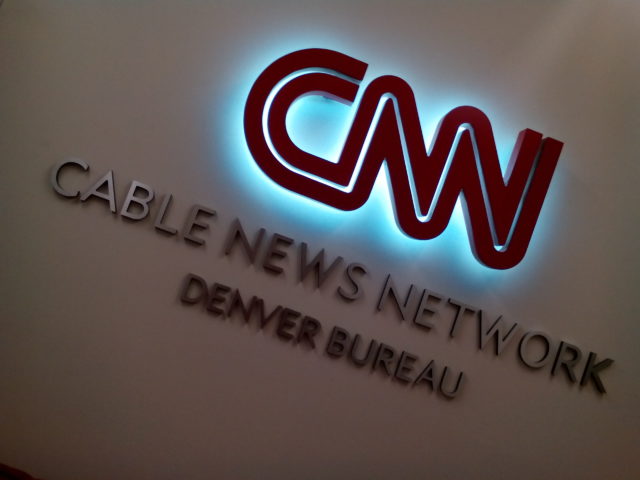 Since becoming a freelancer, I have worked for every CNN show since then including Amanpour, Larry King Live, En Espanol, CNN International, AC 360, The Situation Room, Turner Sports, among several others. ENG, Networks & Television
Film Producers, Films,DP’s, Agencies
Move back to the top of the page Tips for New Sound People* Reference: I will refer to a microphone or Mic or mic, as a head or diaphragm in these articles below in the instances referring to the lavaliere microphone cable. Hiding lavaliere headsBelow are just a few suggestions, and anyone is also available to submit a relevant comment or link to this website to assist production people in tips for capturing the best location sound possible. Please also consider using http://www.google.com – as a great way to search for solutions or ideas to production challenges. Often referred as well by google’ing, googling or google search etc., Youtube is another resource for learning more about location sound techniques, gear operation, learning how to interface with a camera among other help. Protecting the head or diaphragm from rubbing against clothing or other items like jewelry or objects. It’s the key to silent rustle-free sound where the lavaliere is not visible to the camera. Sometimes Moleskin can be used in small amounts in-between tape and skin. Around the head/condensor of the lavaliere microphone, (the end or the microphone), to tape it to their person. Or the inside the outermost layer of clothing below their mouth. Also keeping the mic cable from moving around by securing it to the person or their clothing. As well will keep the microphone in place, as well reduce clothing noise. Using gaffers tape to create a rolled up sticky piece to attach the mic head to will do this typically. While covering the entire roll and microphone head attaching it to either clothing or skin. Using another piece of tape over the both elements will keep the mic head from moving around and making noise. Stronger sticking and more flexible tape is generally preferred to to secure the mic head. Double sided tape can work well but be careful to protect the opening of the lav from glue. And many sound people use other mic clips like vampire clips or other specialized clips. The mic head securing devices that were designed for microphone heads of various makers per the specific manufacturer. Also taping the microphone cable in a lower position with a couple loops will help the microphone head from being moved loose along with a taped loop for strain relief. Countryman and Sanken heads can also be taped to underside of garments with B6 heads being one of the best, if not the best. The reason why microphone heads are hidden are to add reality to a feature film, documentary, television program, or factual entertainment piece. Where a microphone in the shot detracts from the impact or would discredit the entire production or mood. Clips for mic headsBy using a vampire clip in a clothing space that does not rub against the surface of the mic head can be a success. If need be, placing a looped tape barrier to the head in-between the clothing surface will work. Or taping over the entire microphone head as well the clip. There are other clips that can be used to conceal a microphone in certain situations. Some vampire clips work well for this. They can be used to minimize clothing rustle as well. Hush Lavs, Moleskin bandage patches, Rycote stickies among other tricks can be used. Securing a microphone head to skin or clothing as well aside from a mic clip. Body Taping mic headsTaping the mic head to skin (especially in features or documentaries, reality TV or other productions. Where seeing lavaliere heads in the shot are a specific no-no). Use surgical tape or Transpore brand tape, Tagaderms (carefull) or band aids with the head not entirely covered can be a great way. Hiding the mic with less chances of clothing rubbing making noise. As long as clothing contact is controlled by the tape inhibiting contact. Just placing the head a bit lower in this tape can make sure less or no clothing rubs against the microphone head. The valley (a woman’s bosom where a mic head can rest avoiding contact with the clothing), is a common place in feature film production. Or on a man’s chest with surgical tape are common techniques. For corporate environments having a female place or tape the microphone for you on a female if your a sound man can alleviate the awkward moment. If you’re a sound recordist/mixer having some apprehension, explain to the producer or camera person. As well to discuss the procedures with the person on camera or talent. As to why it is needed or not to hide the microphone on the lavaliere. Sandwich methods like putting the head in between two separate layers of gaffers or duct tape can also work. Like on a button shirt, dress shirt or other clothing. You can also if there is collar space go under the shirt collar. Mic head concealment; wardrobeA skilled costume designer can create a costume or modify one to place a lavaliere head to a position where the wardrobe will not interfere with the sound. Common places can be:
If you are shooting an interview with a tighter frame, placing the microphone out of the shot, below the frame can be a good place. Keeping the clothes from rustling. The microphone head/diaphragm; with the head placed outside of the clothing that best mounted to a clip. If the ambient sounds of the room are not too loud. I have several other techniques for hiding microphones. And reducing clothing noise that is called, as well. I also use countryman, among other smaller sized profile microphones that are less prone to clothing noise. Hair & other body placesPlacing the head in the hair will often work with the microphone cable concealed in the hair as well. Taping the head to the skin on the neck if it is not interfered with by clothing, but concealed by clothing is another trick. Use of ColorMany lavaliere heads/mics have choices in color, in particular Countryman mic heads. Enabling a better concealment in varied color garments. Countryman heads and their cables can be ordered in specific colors as well, including colors that match skin tones from white to African American skin or darker colors. This is only partially effective at close distances but could work in longer shots. “The Rig” or the DangleIn corporate environments where people are not comfortable on camera. Let along the thought of a sound recordist interacting with their wardrobe. Attaching the lavaliere mic head to the shotgun microphone can be a hassle free. You can also place the lavaliere head outside the frame on their person on the front of their shirt. But this is not as good as other mic places for better sound. You can also use c-stands to rig a pole over the talent enabling you to clamp with mayfers or hooks. Or other rigs with lavaliere heads or shotgun microphones. Tape and rubber bands can also enable microphone heads to many surfaces or objects. You can also fix the lavaliere outside of the garment placed hidden in the hair, underneath the camera frame or another location. That is not buried under the talents clothing. Such as dangling over the head but near the subjects face in front. This can also be practical for back to back interviews or using another shotgun mic. As a backup can also be a solution. Lavalieres have an advantage often of being closer to the talent, or on the talent. As their design, and often do not pick up unwanted ambient noise as easily as a shotgun mic can. I have many methods of mic clips, and hiding and rigging microphones in my years experience. If you’re concerned, and want to hear before we roll? No problem, here are my headphones.. You’ll be relaxed and ready in no time, after working with me. Move back to the top of the page But Remember, Microphone PlacementA microphone is better closer to pick up on the voices or intended sounds. A microphone out of the shot but closer to an offensive source of ambient noise is useless. The closer the diaphragm is to the audio sources the less you will hear other ambient sounds. That detract from the quality of your sound recording. This is critical in noisy environments and in all situations. Preferred MicrophonesCountryman B3 or B6 models are preferred, also Sanken or any other microphone head that reproduces accurate sound. That are not easily seen with a small surface or diameter. This enables the microphone head to be hidden more easily, enabling less contact with the mic head. Lessening the effects of clothing or other rubbing noises. I will not comment on this page as to what heads are less than ideal. However evaluate the key factors of accurate sound reproduction, reduced head size to your personal preferences. Half of the best location sound is an effective sound recordist. The other half would be the gear and how well it’s used for location sound mixing/recording by the sound assistant. |
